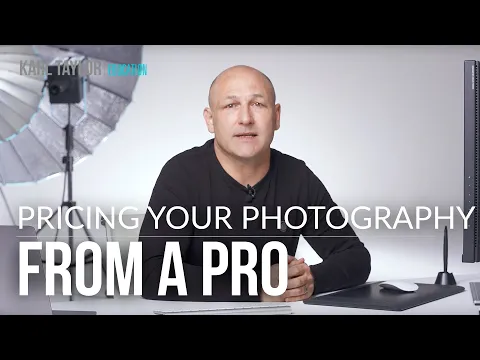Determining how much to charge for a model photo shoot can be a complex decision. There are several factors to consider, including the type of photography, your experience, expenses, and market rates. Setting the right price is crucial for your business’s success and ensuring that you are fairly compensated for your work. In this article, we will guide you through the process of pricing your model photo shoots to help you make informed decisions and maximize your earning potential.

Key Takeaways:
- Consider factors such as photography type, experience, expenses, and market rates when determining your pricing.
- Research other photographers in your area to estimate the market rate and determine a competitive price.
- Your level of experience will impact the rates you can charge, with more experienced photographers commanding higher fees.
- Take into account all operating costs, such as equipment, studio rent, utilities, software subscriptions, and taxes.
- Create a business plan by calculating your costs, desired income, and expected number of jobs to set your photography rates.
Understanding Photography Pricing
When it comes to photography rates for models, calculating model photography charges can be a bit of a puzzle. Understanding how to price your services requires careful consideration of multiple factors, including your experience, the type of photography, and your operating costs.
In the United States, professional photographers typically charge between $100 and $300 per hour or $75 to $350 per image. However, it’s essential to keep in mind that these rates can vary depending on various elements specific to your business.
Let’s delve deeper into the key factors that influence photography rates for models and how to calculate model photography charges effectively.
The Impact of Experience
Your level of experience as a photographer plays a significant role in determining the rates you can charge. Seasoned professionals with a robust portfolio and extensive industry knowledge often command higher fees. On the other hand, photographers who are relatively new to the field may consider setting their prices lower to attract clients and build their reputation.
The Type of Photography
Photography covers a wide range of genres, with each having its own pricing norms. Wedding photography, event photography, and fashion photography, for example, may have different rate ranges based on the specific requirements and expectations of each type. Understanding the pricing landscape for your niche is crucial in setting competitive rates that accurately reflect the value you provide.
Calculating Operating Costs
When determining your pricing, it’s essential to consider all your operating costs. This includes expenses such as equipment, studio rent, utilities, software subscriptions, travel, advertising, and taxes. By factoring in these costs and estimating the number of hours you spend on each job, you can establish the price point necessary to maintain profitability.
Creating a Pricing Structure
To create a comprehensive pricing strategy, you need to understand the market rate for your services and calculate your operating costs. Let’s put it all together in the following table to provide a clearer picture of how these factors interact.
| Factors | Range |
|---|---|
| Your Experience | Varies based on skill level and reputation |
| Type of Photography | Varies based on genre and industry demands |
| Operating Costs | Depends on expenses and desired profit margin |
As you assess your market rate and determine your operating costs, you can refine and calculate your photography rates accordingly. Remember, pricing is rarely static, and adjustments may be necessary over time to remain competitive and reflect your growing expertise.
Next, we’ll explore how different types of photography can influence your pricing structure. Understanding these variations will help you tailor your rates and packages to the unique needs of your clients.
Estimating the Market Rate
To determine the fees for your model shoots, it’s essential to understand the industry standards for model photoshoot fees. Estimating the market rate involves researching other photographers in your area who offer similar types of photography. By examining their starting rates, you can gain valuable insights into where to begin with your own pricing.
Start by identifying photographers who share their pricing information openly. This will give you a benchmark to compare and evaluate your own rates. Look for professionals who have a similar level of experience and provide services that align with your offerings.
Take note of the services included in their packages and any additional charges for extras. This will help you gauge the market’s expectations and determine how your pricing structure should be set up.
Remember that market rates can vary depending on location and niche. Rates in metropolitan areas may be higher compared to smaller towns or rural locations. Additionally, specialized photography niches may have their own unique pricing standards.
Example:
«Photographer A in New York City charges $200 per hour for a model photoshoot with two outfit changes and 10 edited images. Photographer B in a smaller town charges $150 per hour for the same services. These rates reflect the market standards in their respective areas.»
By researching the market rates and understanding the industry standards, you can position yourself competitively and ensure that your fees for model shoots are in line with the expectations of your target audience.

| Location | Average Hourly Rate | Package Inclusions |
|---|---|---|
| New York City | $200 | 2 outfit changes, 10 edited images |
| Los Angeles | $180 | 1 outfit change, 8 edited images |
| Chicago | $150 | 1 outfit change, 5 edited images |
| Miami | $160 | 2 outfit changes, 8 edited images |
The table above provides an example of average hourly rates and package inclusions across different locations. This data can serve as a starting point for determining your own rates and understanding how they align with industry standards.
Considering Your Experience
Your level of experience as a photographer plays a crucial role in determining the rates you can charge for model photo sessions. The more experience you have, the more valuable your skills and expertise become, allowing you to command higher fees. Established professional photographers with a strong portfolio and reputation often have the ability to set premium rates.
On the other hand, if you are just starting out or have limited experience, setting your prices lower can be a strategic move to attract clients and build your portfolio. Offering competitive rates can help you gain practical experience, expand your network, and establish yourself within the industry.
So, how do you determine the right pricing based on your experience? It’s important to strike a balance between setting rates that reflect the value you offer as a photographer and aligning them with your level of experience. Pricing yourself too high without the necessary experience may deter potential clients, while pricing yourself too low may undermine the quality of your work.
Remember, the goal is to establish a fair pricing range that aligns with your level of experience, while delivering the quality and value your clients expect.
Achieving Competitive Pricing with Limited Experience
If you’re a beginner or have limited experience, here are a few strategies to help you determine your rates for model photo sessions:
- Research the market: Look into the average photography rates for models in your area to get an idea of the pricing landscape. Understanding the market rates will help you position yourself competitively.
- Offer introductory packages: Consider creating introductory packages at discounted rates. This allows you to attract clients who are willing to take a chance on a rising talent while still valuing your work.
- Provide exceptional service: Focus on delivering a high-quality experience to compensate for your limited experience. Establish a reputation for reliability, professionalism, and exceptional customer service to differentiate yourself from the competition.
As you gain experience and build your portfolio, you can gradually increase your rates to reflect your growing expertise and demand. Regularly reassessing your pricing and making adjustments as necessary will help you stay competitive in the industry.
Testimonials from Satisfied Clients
| Client Name | Testimonial |
|---|---|
| Anna Thompson | «I hired [Your Name] for a model photo session, and I couldn’t be happier with the results. Despite being relatively new to the industry, [Your Name] demonstrated professionalism, creativity, and a keen eye for detail. The photographs turned out stunning, and I received many compliments on them. I highly recommend [Your Name] to anyone looking for quality photography at an affordable price.» |
| Michael Collins | «Working with [Your Name] was a fantastic experience. Despite being early in their photography career, [Your Name] showed great dedication and passion for their craft. Their talent and attention to detail exceeded my expectations, and the final images were nothing short of amazing. I appreciate their competitive pricing, which made it a win-win situation. I look forward to collaborating with [Your Name] in the future.» |
Determining Your Operating Costs
When setting prices for your model photo shoots, it’s important to consider all of your operating costs. By understanding and accounting for these expenses, you can ensure that your pricing accurately reflects your business needs and goals.
Here are some key factors to consider when calculating your operating costs:
- Equipment: Take into account the cost of your photography equipment, including cameras, lenses, lighting, and props.
- Studio Rent: If you rent a studio space for your shoots, factor in the monthly rent or lease payments.
- Utilities: Include any utility bills, such as electricity and water, associated with your studio or workspace.
- Software Subscriptions: Consider the cost of any software or editing tools you use for photo post-processing or client management.
- Travel: If you frequently travel for photo shoots, account for the cost of transportation, accommodation, and meals.
- Advertising: Factor in expenses related to marketing and promoting your services, such as online ads or printing promotional materials.
- Taxes: Remember to set aside a portion of your earnings for tax obligations.
By carefully determining these costs, you can gain a clear understanding of your financial needs. This will help you determine the minimum income you need to cover your expenses and make a profit.
Example Calculation:
Let’s consider a hypothetical scenario to illustrate how to calculate your operating costs. Suppose you have the following expenses:
- Equipment: $500 per month
- Studio Rent: $600 per month
- Utilities: $100 per month
- Software Subscriptions: $50 per month
- Travel: $200 per month
- Advertising: $100 per month
- Taxes: 20% of your earnings
Based on this, your total monthly expenses would be $1,550 ($500 + $600 + $100 + $50 + $200 + $100).
Next, determine the number of hours you spend on each job and how much income you want to earn per week. For example, if you work 20 hours per week and aim to make $1,000 per week, your desired hourly rate would be $50 ($1,000 ÷ 20).
Using this rate, you can calculate the weekly profit you need to make to cover your expenses:
(Number of hours per week) x (Hourly rate) – (Total monthly expenses)
= 20 x $50 – $1,550
= $1,000 – $1,550
= -$550
In this scenario, your pricing would need adjustment to ensure that you cover your expenses and achieve profitability. You may need to increase your rates or reduce your operating costs to meet your financial goals.
By carefully considering and accurately calculating your operating costs, you can set fair and competitive prices for your model photo shoots that take into account your expenses and profit goals. This ensures that you are running a sustainable and profitable photography business.
Calculating Your Photography Rates
Once you have estimated your market rate and determined your operating costs, it’s time to calculate your photography rates. This step is crucial to ensure that you are pricing your services appropriately and setting yourself up for a profitable business.
To begin, divide your total costs by the number of weeks you plan to work in a year. This will give you the weekly income you need to cover your expenses and make a profit. Consider all the factors that contribute to your costs, such as equipment, studio rent, utilities, software subscriptions, travel, advertising, and taxes.
Next, make assumptions about the number and value of jobs you expect to get at your chosen rate. This will help you create a realistic business plan and determine if your pricing aligns with your income goals.
Here is a simplified example to illustrate the process:
| Operating Costs | Estimated Annual Amount |
|---|---|
| Equipment | $5,000 |
| Studio Rent | $12,000 |
| Utilities | $1,200 |
| Software Subscriptions | $600 |
| Travel | $2,000 |
| Advertising | $1,500 |
| Taxes | $4,000 |
| Total Operating Costs | $26,300 |
Assuming you plan to work 48 weeks in a year, your weekly income target would be $26,300 divided by 48, which is approximately $548. This is the minimum amount you would need to charge per week to cover your operating costs and make a profit.
Now, consider the number of jobs you expect to get and their value. If you anticipate booking 40 photo sessions per year at an average rate of $800 per session, your projected annual income would be $32,000.
With this information, you can assess whether your projected income meets your financial goals. If you find that it falls short, you may need to adjust your pricing or explore opportunities to increase your number of bookings.
Remember, this example is simplified, and your own calculations will depend on your specific circumstances and goals. By carefully evaluating your costs and revenue projections, you can set photography rates that align with your financial needs and position yourself for success.
Types of Photography and Pricing
When determining the rates for your photography services as a freelance photographer, it’s essential to have a clear understanding of the different types of photography and their associated pricing. Each type of photography has its own pricing range, influenced by factors such as demand, expertise required, and production costs. Familiarize yourself with the pricing norms for the specific photography niche you specialize in to ensure you’re offering competitive rates.
Event Photography
Event photography encompasses a wide range of occasions such as corporate events, parties, concerts, and conferences. Rates for event photography can vary significantly depending on the scale and duration of the event, equipment needed, and post-production requirements. On average, event photographers charge between $150 and $500 per hour. Factors such as geographic location and client expectations may also affect pricing.
Wedding Photography
Wedding photography is a specialized niche that requires capturing the emotions, details, and moments of one of the most important days in a couple’s life. Wedding photographers often offer package options that can include engagement sessions, full-day coverage, and photo albums. Pricing for wedding photography can range from $50 to $250 per hour, with high-end photographers charging even more. The duration, complexity, and additional services required will influence the final price.
Portrait Photography
Portrait photography focuses on capturing individuals, families, or groups in various settings or environments. Photographers offering portrait sessions typically charge a flat fee or hourly rate that covers the session time and may include a certain number of edited images. Portrait photography rates can vary depending on factors such as location, expertise, and the level of customization and styling required. Pricing ranges from around $100 to $500 per session.
Product Photography
Product photography involves capturing images of items for commercial purposes, such as catalogues, e-commerce websites, or marketing campaigns. Rates for product photography can vary based on the complexity of the shoot, the number of products involved, and the level of post-processing required. Typically, product photographers charge between $25 and $150 per image. Factors such as product size, reflective surfaces, and additional props or styling may affect the final pricing.
Fashion Photography
Fashion photography encompasses photo shoots for fashion brands, designers, magazines, and models. Pricing for fashion photography can vary widely depending on factors such as the photographer’s reputation and experience, the scope of the project, and the usage rights required. Rates may be calculated by the hour, day, or project. Fashion photographers can charge anywhere from $100 to $500 per hour, with high-end fashion photographers commanding even higher rates.
| Photography Type | Pricing Range |
|---|---|
| Event Photography | $150-$500 per hour |
| Wedding Photography | $50-$250 per hour |
| Portrait Photography | $100-$500 per session |
| Product Photography | $25-$150 per image |
| Fashion Photography | $100-$500 per hour |
Understanding the pricing structures and ranges for different types of photography will enable you to establish reasonable rates for your freelance photography services. Remember to consider factors such as your experience, expertise, equipment costs, and the value you bring to clients when determining your rates. By aligning your pricing with market expectations and offering exceptional value, you can attract clients and build a successful freelance photography business.
Packages and Add-Ons
When it comes to structuring your freelance photography rates for models, offering packages and add-ons can be a smart strategy to both provide additional value to your clients and increase your revenue. By creating different pricing packages that include various services or add-ons like prints or albums, you give clients the ability to choose the option that best fits their needs and budget.
Here are a few ideas for packages and add-ons you can consider:
- Basic Package: This package includes the essentials of a model photo shoot, such as a specified number of hours and a certain number of edited images.
- Premium Package: For clients who want a more comprehensive experience, offer a premium package that includes additional services, like hair and makeup styling or location scouting.
- Prints and Albums: Many clients value physical copies of their photos. Consider offering add-ons, such as prints or albums, that they can purchase separately to enhance their photography experience.
- Retouching Services: Some clients may have specific retouching needs. You can provide add-on services for advanced retouching to meet their requirements.
By tailoring your packages and add-ons to cater to your clients’ preferences and budget, you can create an offering that stands out and increases your chances of securing bookings.
«Offering packages and add-ons allows you to provide a customizable experience for your clients, while also increasing your overall revenue as a freelance photographer.»
Here’s an example of how you could structure your packages:
| Package | Services Included | Price |
|---|---|---|
| Basic Package | 2-hour photoshoot 10 edited images |
$X |
| Premium Package | 4-hour photoshoot Hair and makeup styling 15 edited images |
$X |
| Prints and Albums | High-quality prints Custom-designed album |
Starting from $X |
| Retouching Services | Advanced retouching | Starting from $X per image |

Remember, your packages and add-ons should be designed to enhance your clients’ experience and provide value. Be sure to communicate the details and benefits of each package clearly and transparently to help clients make informed decisions about their investment in your photography services.
Researching Competitor Pricing
When determining fees for model shoots, it’s important to understand the industry standards for model photoshoot fees. One way to gain insight into the market rates in your area is by researching your competitors’ pricing. By examining what other photographers who offer similar services charge, you can better position yourself in the market and ensure your pricing aligns with industry norms.
Start by identifying photographers in your area who cater to a similar clientele and specialize in the same type of photography. Visit their websites or reach out to inquire about their pricing structure. Keep in mind that pricing can vary based on location, target market, and the level of experience of the photographer.
Pro Tip: When researching competitor pricing, focus on photographers with a comparable skill level and target audience. This will give you a more accurate understanding of the market rates specific to your niche.
Take note of the different packages and services your competitors offer and analyze how they structure their pricing. Are they charging an hourly rate or a flat fee? Do they offer any add-ons or optional extras? Understanding their pricing models will help you fine-tune your own and ensure you are offering competitive rates.
It’s important to note that while competitor pricing can serve as a valuable reference point, it should not be the sole factor in determining your fees. Consider your own experience, skill level, and unique value proposition when setting your pricing.
Communicating Your Pricing to Clients
When it comes to determining fees for model shoots, effective communication of your pricing is crucial. By clearly outlining your services and rates, you can establish trust and provide transparency to potential clients. Here are some key points to consider:
1. Breakdown of Services and Rates
Provide a detailed breakdown of the services you offer and the corresponding rates. This allows clients to understand exactly what they are paying for and helps them make informed decisions. Whether you charge by the hour, per session, or a package rate, be explicit about the scope of each option.
2. Answering Client Questions
Be open and responsive to any questions or concerns your clients may have regarding your pricing. Addressing their queries promptly and professionally shows that you value their input and are committed to providing excellent customer service. By building a dialogue with clients, you can ensure that they feel comfortable and confident in choosing your services.
3. Transparency and Clarity
Transparency is key when it comes to pricing. Clearly communicate any additional costs, such as travel expenses or post-production fees, upfront. Make sure your clients understand what is included in the package or session and what is not. Use language that is easy to understand and avoid any ambiguous or misleading terms.
«Transparency is key when it comes to pricing.»
4. Setting Realistic Expectations
During discussions about your pricing, make sure to set realistic expectations with your clients. Be honest about the time it takes for you to deliver a final product and any factors that may impact the pricing, such as the complexity of the shoot or additional editing requests. Setting clear expectations from the start helps manage client perceptions and avoids any surprises or misunderstandings.
5. Providing Samples or Testimonials
Include samples of your previous work or testimonials from satisfied clients to showcase the value and quality of your photography. Seeing tangible evidence of your skills and professionalism can help clients feel more confident in your pricing and increase their willingness to invest in your services.
By effectively communicating your pricing to clients, you can establish trust, manage expectations, and ultimately secure bookings. Remember, transparency, clarity, and responsiveness are key to building strong relationships with your clients and maintaining a successful photography business.
Adjusting Your Pricing Over Time
As you gain more experience and build your reputation, it’s important to adjust your pricing to reflect your value and expertise. Don’t be afraid to increase your rates as your skills improve and the demand for your services grows. Regularly assessing and adjusting your pricing strategy will ensure that you remain competitive in the market and continue to attract high-quality clients.
When considering how to adjust your pricing, there are several factors to consider:
- Your skill level and experience: As you become more skilled and established in your field, your pricing should reflect your increased expertise.
- Industry trends and market rates: Stay updated on the latest industry trends and market rates for model photography. Research what other photographers with similar experience and skills in your area are charging to ensure your rates are aligned.
- Inflation and operating costs: Take into account changes in the cost of living, inflation rates, and any increases in your own operating costs when adjusting your pricing.
- Client demand and exclusivity: If you find that your services are in high demand or you provide a unique offering, it may be appropriate to increase your rates to reflect the exclusivity and value you bring to your clients.
Remember, adjusting your pricing doesn’t mean raising your rates arbitrarily. It’s essential to provide justifications for any changes to your clients and ensure they understand the value they will receive in return. Communicate the reasons behind your pricing adjustments and emphasize the benefits and quality you bring to your clients’ projects.
Here’s an example of how you can adjust your pricing over time:
| Experience Level | Initial Pricing | Adjusted Pricing |
|---|---|---|
| Beginner | $100 per hour | $125 per hour |
| Intermediate | $150 per hour | $200 per hour |
| Advanced | $200 per hour | $250 per hour |

By regularly assessing and adjusting your pricing over time, you can ensure that you are fairly compensated for your skill and expertise, attract high-quality clients, and maintain a profitable photography business.
Providing Exceptional Value
When determining fees for model shoots, it’s essential to consider the value you bring to your clients. By providing exceptional service and delivering stunning photos, you can justify higher pricing and differentiate yourself in the market.
Focus on creating a high-quality experience for your clients. From the initial consultation to the final delivery of their photos, strive to exceed expectations at every step. Pay attention to the smallest details, ensure a comfortable and enjoyable shooting environment, and provide timely and professional communication throughout the process.
Delivering exceptional photos is the cornerstone of your business. Invest in top-of-the-line equipment, stay updated on the latest photography techniques, and continuously improve your skills. This commitment to excellence will be reflected in the final product and set you apart from competitors.
Customer service is equally important when providing exceptional value. Be attentive, responsive, and respectful to your clients’ needs and preferences. Take the time to listen to their vision and offer guidance and suggestions when necessary.
“A model photo shoot is not just about capturing images; it’s about creating an unforgettable experience and making your clients feel valued and beautiful.”
By going above and beyond for your clients, you will build strong relationships and develop a reputation for excellence. Satisfied clients are more likely to become repeat customers and refer you to their friends and colleagues, allowing your business to thrive.
| Benefits of Providing Exceptional Value | How it Impacts Your Business |
|---|---|
| 1. Increased customer satisfaction | Your clients will be delighted with their experience and more likely to recommend you. |
| 2. Differentiation from competitors | By offering a level of service and quality that stands out, you can command higher prices. |
| 3. Positive word-of-mouth advertising | Satisfied clients become advocates for your business, helping you attract new clients. |
| 4. Repeat business and client loyalty | Providing exceptional value ensures that clients keep coming back for future shoots. |
Remember, providing exceptional value is not just about the money. It’s about nurturing relationships, creating beautiful memories, and leaving a lasting impression on your clients.
Building Relationships with Clients
Building strong relationships with your clients is crucial for long-term success in the model photography industry. By establishing trust and providing exceptional service, you can cultivate a loyal client base that not only values your work but is also willing to pay your desired fees.
Exceed Expectations
One of the key ways to build and maintain strong client relationships is to consistently exceed expectations. This involves delivering high-quality photographs that capture the essence of the model and showcase their unique attributes. Take the time to understand your clients’ needs and preferences, and strive to deliver outstanding results that go above and beyond their expectations.
Personalize the Experience
Show your clients that you value their individuality by personalizing their photography experience. Take the time to get to know your clients on a personal level, discussing their goals, vision, and desired outcomes for the photoshoot. This will not only make them feel valued but also allow you to tailor your approach to meet their specific needs.
Furthermore, consider offering customized package options that cater to different client preferences and budgets. This allows clients to choose a package that aligns with their specific requirements, ensuring a more personalized and satisfying experience.
Nurture Communication
Open and transparent communication is key to building strong client relationships. Be responsive to their inquiries, promptly addressing any concerns or questions they may have. Clearly communicate your pricing structure and any additional fees or charges upfront to avoid any misunderstandings or surprises.
Additionally, consider implementing regular client check-ins to maintain communication and gather feedback. This demonstrates your commitment to their satisfaction and provides an opportunity for continuous improvement.
| Benefits of Building Strong Client Relationships | Examples |
|---|---|
| Repeat Business | A satisfied client who knows and trusts you is more likely to hire your services for future photoshoots. |
| Referrals | Loyal clients who are impressed with your work are more likely to recommend you to their friends, family, and colleagues. |
| Positive Reviews | Satisfied clients are more inclined to leave positive reviews and testimonials, which can boost your reputation and attract new clients. |
Deliver Exceptional Customer Service
Providing outstanding customer service is essential for building lasting client relationships. Be prompt, professional, and attentive to their needs throughout the entire process. Ensure that they feel valued and well taken care of, from the initial consultation to the final delivery of their photographs.
Go the extra mile by offering small gestures and personalized touches, such as a handwritten thank-you note or a sneak peek of a few edited photos. These thoughtful acts can make a lasting impression and solidify your client’s trust and loyalty.
Nurture a Long-Term Connection
Creating lasting relationships with your clients requires ongoing effort. Stay in touch with them even after their photoshoot is complete, sending occasional updates, seasonal greetings, or personalized offers. This shows that you value the relationship beyond business transactions and fosters a sense of loyalty and connection.
Remember that building client relationships is an ongoing process. By consistently delivering exceptional work, personalized experiences, and exceptional customer service, you can establish yourself as a trusted photographer, ensuring a steady flow of clients and a thriving photography business.

Marketing and Promoting Your Services
Once you have determined the fees for your model shoots and calculated your photography charges, it’s time to focus on marketing and promoting your services. Effective marketing strategies can help you attract clients who are willing to pay your rates and appreciate the value you offer. Here are some key tactics to consider:
Showcase Your Work on Social Media
Social media platforms such as Instagram and Facebook provide an excellent opportunity to showcase your photography skills and build an online presence. Create a professional account dedicated to your photography business and regularly post high-quality images that demonstrate your unique style and expertise. Use relevant hashtags and engaging captions to increase your reach and attract potential clients.
Create an Impressive Online Portfolio
An online portfolio serves as a powerful tool to showcase your best work and make a strong impression on potential clients. Design an appealing website that is easy to navigate and reflects your brand identity. Organize your portfolio into different categories, such as fashion, portrait, or commercial photography, to cater to diverse client needs. Include a brief biography and client testimonials to enhance your credibility.
Targeted Advertising
Consider investing in targeted advertising to reach your ideal clients. Platforms like Google Ads and Facebook Ads allow you to define your target audience based on demographics, interests, and location. Craft compelling ad copy and select eye-catching visuals that highlight your unique selling points. Monitor the performance of your ads and make necessary adjustments to maximize their effectiveness.
Tip: Collaborate with local influencers or models with a significant social media following and offer them a complimentary photoshoot in exchange for promoting your services. This will not only help widen your reach but also generate trust and credibility within your target market.
Networking and Collaboration
Building relationships within the industry can be key to generating referrals and expanding your client base. Attend local events, join photography associations, and participate in online communities to connect with other professionals and potential clients. Collaborate with stylists, makeup artists, and models to create collaborative projects that showcase everyone’s talents and attract attention from a wider audience.
Highlight Your Unique Selling Points
What sets you apart from other photographers in the market? Identify your unique selling points and communicate them clearly in your marketing materials. Whether it’s your distinctive style, specialized equipment, or exceptional customer service, emphasize what makes your photography services exceptional and attractive to clients.
By implementing these marketing strategies, you can effectively promote your photography services and attract clients who appreciate and are willing to pay your fees. Remember to regularly assess the success of your marketing efforts and make adjustments as needed to ensure ongoing growth and profitability.
Conclusion
Setting the right pricing for your model photo shoots is a crucial aspect of running a successful photography business. It requires careful consideration of various factors to ensure that your rates reflect the value you provide and allow for a profitable venture.
First and foremost, conduct thorough research to understand the market rates for model photo shoots in your area. This will give you a baseline to work from and help you determine a competitive pricing strategy.
Additionally, calculate your operating costs, taking into account factors such as equipment, studio rent, utilities, and taxes. By accurately estimating your expenses, you can ensure that your pricing covers these costs while leaving room for profit.
Lastly, focus on offering exceptional value to your clients. Deliver high-quality photographs, provide outstanding customer service, and go above and beyond their expectations. By doing so, you can justify higher rates and build a loyal client base that appreciates the quality of your work.
FAQ
How much should I charge for a model photo shoot?
Determining the right pricing for a model photo shoot can be complex. Factors to consider include the type of photography, your experience, expenses, and market rates.
What are the industry standards for model photoshoot fees?
Pricing for photography can range from $100 to $300 per hour or $75 to $350 per image for professional photographers in the US. The amount you charge will depend on factors such as your experience, the type of photography, and your operating costs.
How do I estimate the market rate for my model photography services?
To estimate the market rate for your services, research other photographers in your area who offer similar types of photography. Look for photographers who share their starting rates to get an idea of where to begin with your pricing.
How does my experience level as a photographer impact what I can charge?
Your level of experience as a photographer will impact the rates you can charge. Professional photographers with more experience can command higher fees, while beginners or those with less experience may need to set their prices lower to attract clients and build their portfolio.
What factors should I consider when setting my model shoot prices?
Consider all of your operating costs when determining your pricing. This includes expenses such as equipment, studio rent, utilities, software subscriptions, travel, advertising, and taxes. Factor in the number of hours you spend on each job and your desired income to determine the weekly profit you need to make.
How do I calculate my photography rates?
Once you have estimated your market rate and determined your operating costs, you can calculate your photography rates. Divide your costs by the number of weeks you plan to work in a year to determine the weekly income you need to make a profit. Then, make assumptions about the number and value of jobs you expect to get at your chosen rate to create a business plan.
What are the pricing ranges for different types of photography?
Different types of photography have different pricing ranges. For example, event photography rates can range from $150 to $500 per hour, while wedding photography rates can range from $50 to $250 per hour. It’s important to understand the pricing norms for the specific type of photography you specialize in.
Should I offer packages and add-ons to my photography services?
Offering packages and add-ons can allow you to provide additional value to your clients and increase your revenue. Consider offering different pricing packages that include various services or add-ons like prints or albums, allowing clients to choose the option that best fits their needs and budget.
How can I research my competitors’ pricing?
Research your competitors’ pricing to get a sense of the market rates in your area. Look for photographers who offer similar services and see what they charge. Keep in mind that pricing can vary based on location and the specific niche you are targeting.
How should I communicate my pricing to potential clients?
Clearly communicate your pricing to potential clients in a professional manner. Include a breakdown of your services and rates, and be open to answering any questions they may have. Transparency and clarity in your pricing will help build trust with clients.
Should I adjust my pricing over time?
As you gain more experience and build your reputation, you can adjust your pricing accordingly. Don’t be afraid to increase your rates as your skills and demand for your services grow. Regularly assessing and adjusting your pricing will ensure that you are staying competitive in the market.
How can I provide exceptional value to justify higher pricing?
Offering exceptional value to your clients can justify higher pricing. Focus on providing a high-quality experience, delivering stunning photos, and offering excellent customer service. By going above and beyond for your clients, they will be more willing to invest in your services at higher rates.
How can building relationships with clients help my pricing?
Building strong relationships with your clients can lead to repeat business and referrals. By providing a top-notch experience and exceeding expectations, you can develop a loyal client base who values your work and is willing to pay your rates.
How can marketing and promoting my services help attract higher-paying clients?
Effective marketing and promotion of your photography services can help attract clients who are willing to pay your rates. Use social media, online portfolios, and targeted advertising to showcase your work and reach your target audience. Highlight your unique selling points and what sets you apart from competitors.
How do I ensure a profitable model photo shoot business?
Determining the right pricing for a model photo shoot requires careful consideration of various factors, including your experience, operating costs, and market rates. By conducting thorough research, calculating your costs, and offering exceptional value, you can set competitive rates that reflect the quality of your work and ensure a profitable business.







